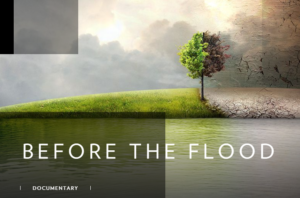By Peter Gleick, President Emeritus and Chief Scientist
October 2016
The reality of climate change, driven by the fossil-fuel industrialization of the planet, is upon us. Scientists have known for decades of this risk and have, with increasing urgency, tried to alert the public and policy makers about the threat and the opportunities to reduce that threat, to little avail. And now, we must live with unavoidable consequences, even as we continue to work to reduce the emissions of climate-changing gases.
Among those unavoidable consequences are widespread impacts on freshwater – perhaps the most important resource for human and ecological well being, economic productivity, and global security. Water is a renewable resource, and vital for all the things we want to do. The hydrologic cycle of evaporation, condensation, precipitation, runoff, and back to evaporation provides life-giving rains for crops and forests, generates the runoff we see flowing in our rivers and streams, and refreshes the oceans that are the nurseries for much of the life on the planet.
Yet as the climate changes, the hydrologic cycle must change as well – indeed we already see evidence of these changes. Rising temperatures are causing more evaporation and more demand for water by agriculture and natural ecosystems. More heat and moisture in the atmosphere are contributing to more severe storms and flooding. Warming lakes and streams are beginning to devastate fisheries and change water quality and living conditions for countless aquatic organisms. Droughts are becoming more severe under the influence of climate change. Rising sea levels will increasingly damage coastal wetlands as well as devastate communities that cannot afford to build massively expensive coastal defenses or to relocate.
The evidence of change is all around us, and not just in the form of the rapidly rising thermometers that are the most commonly cited evidence of the greenhouse effect. We are seeing larger and more severe algal blooms in our lakes and along our coasts. The California drought has been deeper and more sustained than it would otherwise have been, as have other droughts around the world. Extreme precipitation events are becoming more frequent and damaging. And pressures, including political pressures, on already scarce water resources are growing.
Even without climate change, the world has plenty of severe water challenges. Seven hundred million people lack access to safe and affordable drinking water. More than two billion lack adequate sanitation. Droughts and floods are already the most damaging extreme natural events for society. Under investment and poor management of water systems leads to preventable contamination events and water-related diseases, especially for poorer, disadvantaged communities. Tensions and violence over shared water resources are growing. Climate change is an added burden on all of these water problems.
We must, and we can, tackle global and local water challenges. We must, and we can, include the new threats to our water posed by human-caused climate change. We need a new way of thinking about water, what I’ve called “a soft path for water” that moves away from old, damaging water policies and toward true water sustainability. The soft path requires smarter use of innovative technologies for obtaining, purifying, and distributing water. It requires using our water far more carefully and efficiently to produce the food, fiber, and goods and services we need. It includes applying smart economic tools to price water properly while acknowledging that access to basic safe water and sanitation are also fundamental human rights. And the soft path requires that we develop 21st century policies to manage water resources for the long-term and for future generations, and in a way that not only addresses the risks posed by climate change but works to reduce those risks as quickly as possible A sustainable future for water is possible, but we must move along a different path than the one we are on today and that requires that all of us, as individuals, communities, nations, and a planet work together.
This blog was originally published on National Geographic.

